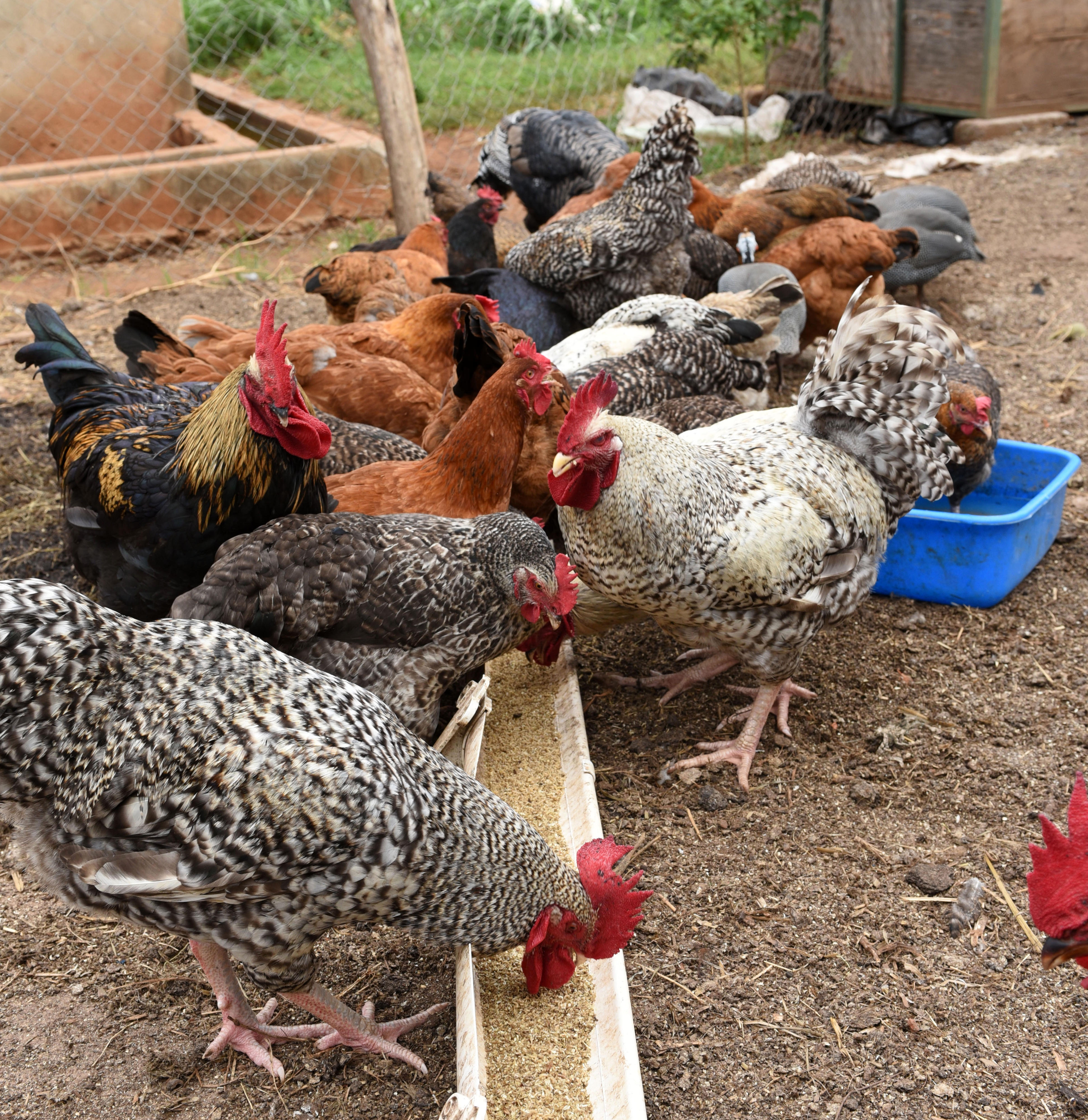Prime
Most common diseases affecting poultry locally

Local chicken can also feed on maize brand. Photo/File
What you need to know:
- One good thing about chicken farming is that the growing and production cycles are fairly short, space requirement is low and the demand for eggs and poultry meat is always high.
Chicken is the most commonly farmed livestock and in the largest quantities amongst land animals the world over. I asked some farmers what livestock is and they told me it is large farm animals such as cattle, sheep and goats. They unanimously said chicken is poultry and not livestock.
Chicken as livestock
Actually chicken is livestock in the sub category poultry. We define livestock as any animal that is reared to produce food such as meat, milk and eggs. Livestock farming also generates non-edible commercial products such as leather, fur, wool and manure.
Highly vulnerable
Chicken is an easy animal to farm but also highly vulnerable to sudden infections with heavy deaths and losses. However, if one masters the art of chicken farming, disease outbreaks and mass deaths are very rare.
One good thing about chicken farming is that the growing and production cycles are fairly short, space requirement is low and the demand for eggs and poultry meat is always high. Egg chicken are called layers and the meat ones broilers. The broilers have a 42 day growth and production cycle while layers have about 18 months.
My article recently on egg drop has elicited a lot of interest and questions from chicken farmers from different parts of the country. I will highlight a few.
Raffled feathers
John Were said he has about 80 layers. Many had snoring sound, droopy eyes, lowered heads and dropping wings with raffled feathers. He had been advised to give antibiotics, vitamins and probiotics but had not seen signs of recovery. He was losing two birds every week. He wanted to know how to deal with the problem effectively.
Were’s case was consistent with mycoplasma infection, medically called chronic respiratory disease (CRD). I advised him on the treatment to give for 3-5 days and report back to me on the outcome.
Another request for consultation came from Tom Obanda. Obanda said he lost four layers three weeks ago to an unknown cause. He was advised to give antibiotics for three days but the problem did not resolve after treatment.
Diagnosis
His animal health service provider advised him to take some birds to the laboratory for post-mortem. The lab diagnosed heavy worm burden. He dewormed the birds but they just dropped egg production by almost 50 percent and started snoring.
Obanda’s main problem could not be the worms. I still diagnosed CRD and I am still working with him on treatment. The worms were just a complicating factor.
Finally, Mark wondered how he could help his mother treat her improved local chicken. The birds had developed sudden eye swelling with some discharge. They could not feed and were dying slowly in small numbers. I asked him to send me pictures of the sick birds with the eyes closed and opened.
There is the saying that someone died quickly like a chicken. It is true that chicken don’t stay for long with illnesses. They are fragile creatures and they tend to die quickly from most infections involving the respiratory and digestive systems. It is not possible for chicken farmers to diagnose and treat chicken diseases- otherwise they should have been veterinary doctors. Every farmer should, however, be able to have a bird’s eye view on chicken wellness. She should know when the birds are sick, when they need emergency medical attention by a veterinary doctor.
Quality feed
Farmers should not struggle to cram various drugs for treating different diseases because every disease situation is different form the other. That is the reason farmers wonder why drugs are not working. There are situations where single drugs are effective and others where combination therapy is necessary.
Chicken problems are divided into non-infectious and infectious conditions. Non-infectious have to do with inadequate or poor quality feed or both. There is also hygiene and physical conditions. The physical conditions include animal attacks, frightening situations such as loud noise, lightning and thunder among others.
For infectious causes of disease, chicken in almost all situations will show drooping eyes, heads and dropping wings with ruffled feathers. Diarrhoea is a common sign.
Some diseases have specific type of diarrhoea such as coccidiosis caused by the disease agent Eimeria tenella which invariably gives chocolate brown faeces. The droppings then progress to brown diarrhoea. Finally, it becomes brown diarrhoea with blood. Birds can die at any stage from when the brown diarrhoea occurs. Best treatment is at the brown stool stage.
White, greenish and yellow diarrhoea in chicken is not diagnostic. There are many causes. The doctor must look for other signs and post-mortem examination to come up with a clinical diagnosis. Confirmation of the disease may sometimes require laboratory investigation.
I advise chicken farmers to call for professional help the moment their birds show poor appetite, diarrhoea, snoring, heavy sneezing or faulty eggs. Waiting for eye and head drooping, dropping wings and ruffled feathers reduces the chances of quick recovery and preventing heavy deaths.




